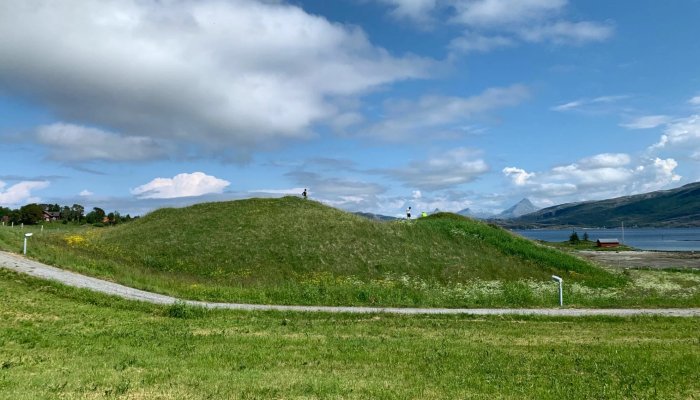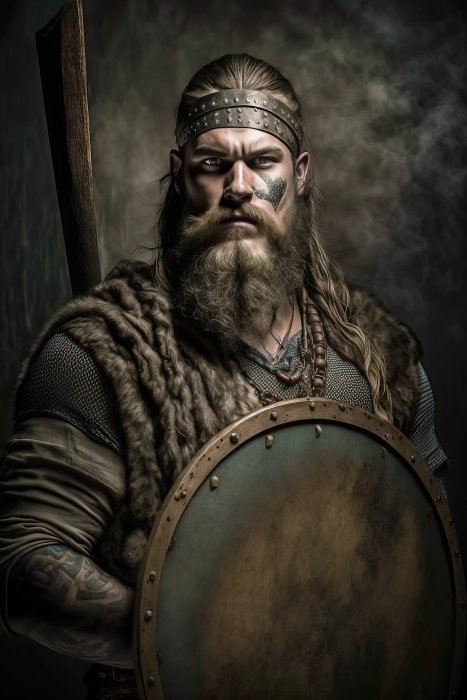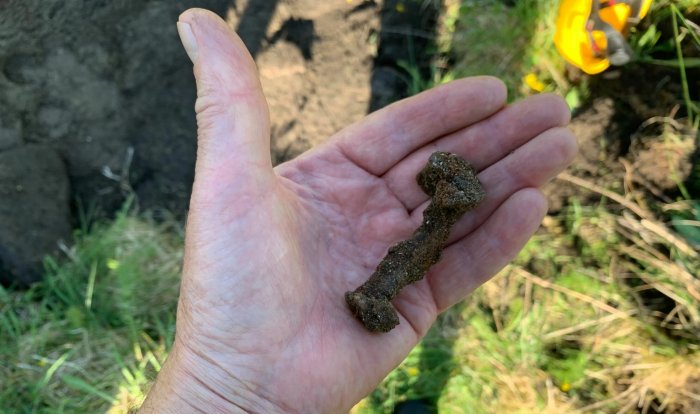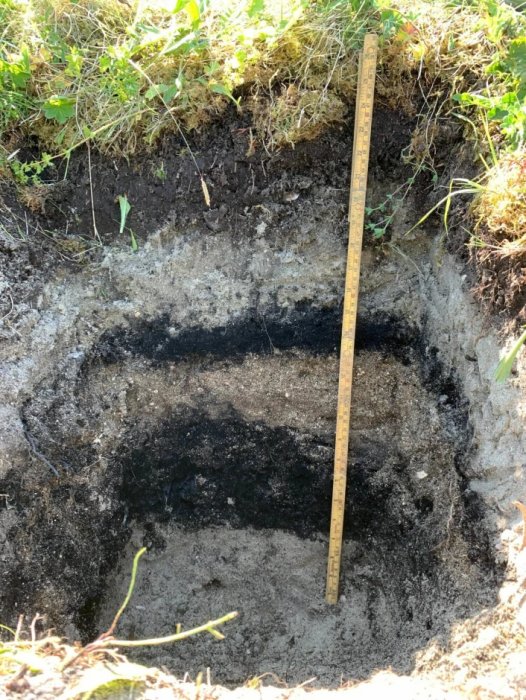Jan Bartek – AncientPages.com – In late June, archaeologists conducted what they thought would be a minor investigation of Herlaugshaugen, a burial mound on the island of Leka in north-central Norway.
Herlaugshaugen is mentioned in Snorre’s sagas as the final resting place of King Herlaug. He chose to be buried in this burial mound instead of submitting to Harald Fairhair.

This is Herlaugshaugen. The discovery of ship rivets has archaeologists believing that Herlaugshaugen was likely a ship burial site. (PH๏τo: Geir Grønnesby / NTNU University Museum)
The investigation aimed to date the burial mound more precisely and determine whether the burial mound could have been a ship burial.
The Norwegian Directorate for Cultural Heritage carried out the investigations in collaboration with the NTNU University Museum and the Trøndelag County Municipality.
Seated Skeleton And Sword
The burial mound has a diameter of over 60 meters and is one of the largest burial mounds in Norway. It was excavated three times during the late 18th century.

The burial place of King Herlaug has not yet been found. Credit: Adobe Stock – Michael
According to accounts, finds were made at that time, including a kind of wall, iron nails, a bronze kettle, animal bones, and a seated skeleton with a sword.
“Unfortunately, these finds disappeared in the early 1920s. The skeleton was displayed at Trondheim Cathedral School as King Herlaug for a while, but no one knows where it went,” Geir Grønnesby, project leader for the investigations, says. “All the other finds are also gone. It is said that the bronze kettle was melted down to make shoe buckles.”
(Very) Likely A Ship Burial
It has long been debated whether Herlaugshaugen could contain a ship since both nails and remnants of a wall were found in the 18th century. Ship burials typically include larger structures inside the mound, such as walls and timbered boxes.
However, no one could say for certain.
Archaeologists are still not entirely sure, but let’s put it this way: It is very, very likely that Herlaugshaugen housed a ship burial—even though the ship itself has rotted away over the centuries.
This year’s investigations revealed rivets of a decent size.

This is what a ship rivet looks like. Finding these rivets suggests that Herlaugshaugen was a ship burial. (PH๏τo: Geir Grønnesby / NTNU University Museum)
“It is not possible to determine the exact size, but the size of the rivets tells us that this has been a ship,” Grønnesby says. “In this type of investigation, you can find everything and nothing, and I can ᴀssure you that we should have had a camera ready when the first nail was found. We were through the roof with excitement!”
Dating The Grave
Grønnesby adds that the team has uncovered a surprising amount from a small investigation. In addition to nails, the archaeologists found remnants of preserved wood, a layer of charcoal, and a horse’s tooth.
“This means that we have a good basis for dating the grave,”he says. “The mound has been referred to as a Viking Age grave, but it shares similarities with another burial mound—Storhaug—that is dated to the late Merovingian period, meaning the period before the Viking Age. The dating will hopefully provide us with answers regarding the age of the grave.”
Hanna Geiran, director of the Directorate for Cultural Heritage, says the find is incredibly exciting and interesting.

Archaeologists also found remnants of preserved wood, a layer containing charcoal, and a horse’s tooth. (PH๏τo: Geir Grønnesby / NTNU University Museum)
“Although this is a known site, the findings from the investigation make it more likely that this could have been a ship burial. Now the findings will be reviewed, and over the summer, we will learn more about the history of this fantastic cultural heritage site,” Geiran says.
Viking funeral traditions were complex, but based on archaeological evidence, and it seems that the funeral boat or wagon was a practice that was reserved for the wealthy. Before the age of Christianity, when Vikings still worshipped pagan gods, it was common to bury a Viking with his belongings, often lying in a boat or a wagon to make the journey to the next world easier. People believed the deceased person would need particular objects in the afterlife.
Further studies of Herlaugshaugen will reveal whether the mound is the resting place of King Herlaug.
Written by – Jan Bartek – AncientPages.com Staff Writer





